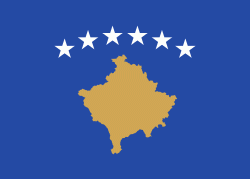District of Prizren (Prizren District)
The Prizren District (Albanian: Rajoni i Prizrenit; Turkish: Prizren ili) is one of the seven districts of Kosovo. Its seat is in the city of Prizren. According to the 2011 Census, it has a population of 331,670 and an area of 2,024 square km (around 20% of the total area of Kosovo). Albanians form the majority of the district (85%). However, the district of Prizren is home to the biggest Bosniak and Turkish population in Kosovo, who make around 10% of the district's total population.
The district of Prizren has a total of 5 municipalities and 195 other smaller settlements.
The district of Prizren has a total of 5 municipalities and 195 other smaller settlements.
Map - District of Prizren (Prizren District)
Map
Country - Kosovo
 |
 |
In classical antiquity, the central tribe which emerged in the territory of Kosovo were the Dardani, who formed an independent polity known as the Kingdom of Dardania in the 4th century BC. It was annexed by the Roman Empire by the 1st century BC, and for the next millennium, the territory remained part of the Byzantine Empire, whose rule was eroded by Slavic invasions beginning in the 6th–7th century AD. In the centuries thereafter, control of the area alternated between the Byzantines and the First Bulgarian Empire. By the 13th century, Kosovo became the core of the Serbian medieval state, and has also been the seat of the Serbian Orthodox Church from the 14th century, when its status was upgraded to a patriarchate. Ottoman expansion in the Balkans in the late 14th and 15th century led to the decline and fall of the Serbian Empire; the Battle of Kosovo of 1389 is considered to be one of the defining moments in Serbian medieval history. The Ottomans fully conquered the region after the Second Battle of Kosovo. The Ottoman Empire ruled the area for almost five centuries until 1912.
Currency / Language
| ISO | Language |
|---|---|
| SQ | Albanian language |
| SR | Serbian language |
















